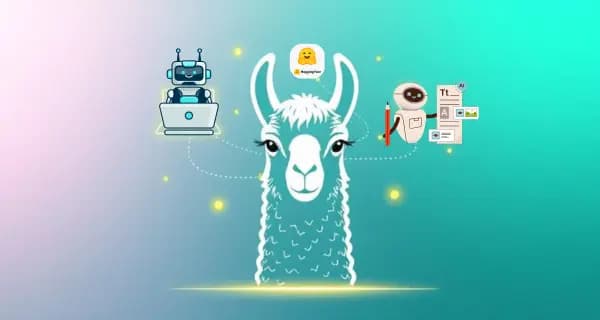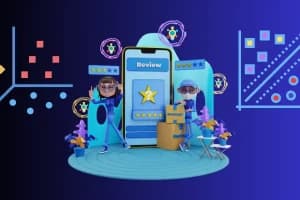Meta's LLaMA 4 is an amazing new AI tool that's great at writing, thinking, and even understanding pictures. It's free to use with Hugging Face, and you can run it on Google Colab's free GPUs-no expensive computer needed! If you're new to AI or coding, don't worry. This LLaMA 4 guide will show you every step to get started in Colab, even if you're just beginning.
In this easy blog, we'll explain what LLaMA 4 is, set up a Colab notebook, load the model with Hugging Face, make it write for you, and adjust it for Colab. Ready to try this Google Colab AI trick? Let's jump in!
What Is LLaMA 4?
LLaMA 4 (short for Large Language Model Meta AI 4) is Meta's newest AI, launched on April 5, 2025. It's special because it works with both words and images. Plus, it's smart and fast thanks to its mixture-of-experts (MoE) design. Hugging Face, a popular AI site, gives you two versions to play with:
-
Llama-4-Scout-17B-16E: Has 17 billion parts, 16 helpers, and can handle 10 million words at once. Great for all kinds of tasks!
-
Llama-4-Maverick-17B-128E: Also 17 billion parts but with 128 helpers and a 1-million-word limit. Perfect for harder jobs.
These models are awesome at solving math, writing Python code, or telling stories. They work in 12 languages, like English and Spanish. Best of all, you don't need a fancy PC. With Google Colab's free GPU power, this Hugging Face tutorial lets anyone try LLaMA 4 out!
Setting Up Your Environment in Google Colab
Google Colab is a free, cloud-based platform for running Python code, complete with GPU support. Here's how to get started.
Prerequisites
-
Google Account
-
You'll need one to use Colab. Sign in at colab.research.google.com.
-
Create a New Notebook
-
Go to Colab, click "File" > "New Notebook." You'll see a blank notebook with code cells.
-
Enable GPU
-
Colab offers free GPUs (e.g., NVIDIA T4). To activate:
-
Click "Runtime" > "Change runtime type."
-
Set "Hardware accelerator" to "GPU" and click "Save."
-
This setting gives you ~12-16GB of VRAM-enough for LLaMA 4 with tweaks.
-
Install Libraries
-
Colab has Python pre-installed, but we need specific libraries. In a new code cell, run.
-
! tells Colab to run this as a shell command.
-
transformers: Hugging Face's library for models.
-
accelerate: Optimizes GPU/CPU use.
-
bitsandbytes: Enables memory-saving quantization.
!pip install transformers accelerate bitsandbytesHit "Run" (the play button) and wait for installation to finish.
Step 1: Loading LLaMA 4 in Colab
Let's load LLaMA 4 Scout using Hugging Face in Colab.
Add a Code Cell for Imports
import torch
from transformers import AutoTokenizer, AutoModelForCausalLMSpecify the Model
Scout is lighter and fits Colab's GPU limits with quantization. Maverick is an option if you upgrade to Colab Pro (more VRAM).
Load Tokenizer and Model
-
torch.float16: Cuts memory use in half.
-
device_map="auto": Leverages Colab's GPU automatically.
-
load_in_8bit=True: Compresses the 17B model to ~20GB (still tight for Colab's free tier-see 4-bit below).
tokenizer = AutoTokenizer.from_pretrained(model_name)
model = AutoModelForCausalLM.from_pretrained(
model_name,
torch_dtype=torch.float16, # Half-precision saves memory
device_map="auto", # Uses Colab's GPU
load_in_8bit=True # 8-bit quantization for Colab's limits
)Troubleshooting:
-
Access Denied: Visit Hugging Face, log in, and request access (free but gated).
-
Memory Error: Colab's free GPU might choke on 8-bit. Skip to the 4-bit section below.
Step 2: Generating Text with LLaMA 4
Now, let's make LLaMA 4 talk!
Create a Prompt
This prepares your question for the model.
prompt = "Explain the theory of relativity in simple terms."
inputs = tokenizer(prompt, return_tensors="pt").to(model.device)Generate a Response
outputs = model.generate(
**inputs,
max_new_tokens=200, # Limits output length
do_sample=True, # Adds creativity
top_p=0.9, # Filters word choices
temperature=0.7 # Balances coherence and flair
)
response = tokenizer.decode(outputs[0], skip_special_tokens=True)
print("\n🧾 Response:\n", response)Output:
🧾 Response:
The theory of relativity, by Einstein, says time and space can stretch or bend. Picture a trampoline: a heavy ball curves it—that’s gravity. If you move super fast, time slows for you compared to someone still. It’s why GPS clocks adjust to stay accurate!
Advanced Tweaks for Colab
Colab's free tier has limits (~12-16GB VRAM), so let's optimize.
Use 4-bit Quantization
For better memory fit, install peft first. In a cell, run:
!pip install peftThen update your model loading:
-
4-bit drops Scout to ~10-12GB, perfect for Colab's T4 GPU.
-
Rerun your prompt cell after this.
from transformers import BitsAndBytesConfig
bnb_config = BitsAndBytesConfig(load_in_4bit=True)
model = AutoModelForCausalLM.from_pretrained(
model_name,
quantization_config=bnb_config,
device_map="auto"
)Tweak Output Settings
In the model.generate cell, try:
-
max_new_tokens=50: Shorter answers.
-
temperature=0.5: More factual.
-
top_p=0.7: Tighter coherence.
Example 1: Writing a Haiku
prompt = "Write a haiku about the moon."
inputs = tokenizer(prompt, return_tensors="pt").to(model.device)
outputs = model.generate(
**inputs,
max_new_tokens=50,
do_sample=True,
top_p=0.95,
temperature=1.0
)
print(tokenizer.decode(outputs[0], skip_special_tokens=True))Output:
Lunar whispers sing, Glowing soft in night’s embrace, Shadows dance alive.
Example 2: Generating Python Code
prompt = "Write a Python function to calculate the factorial of a number."
inputs = tokenizer(prompt, return_tensors="pt").to(model.device)
outputs = model.generate(
**inputs,
max_new_tokens=100,
do_sample=False, # No randomness for code
top_p=0.9,
temperature=0.6
)
print(tokenizer.decode(outputs[0], skip_special_tokens=True))Output:
Example 3: Crafting a Short Story
prompt = "Tell a short story about a lost astronaut."
inputs = tokenizer(prompt, return_tensors="pt").to(model.device)
outputs = model.generate(
**inputs,
max_new_tokens=150,
do_sample=True,
top_p=0.9,
temperature=0.8
)
print(tokenizer.decode(outputs[0], skip_special_tokens=True))Output:
Drifting through the void, Astronaut Kael’s ship flickered out, stranding him beyond Neptune. His radio hissed static, stars his only companions. Days blurred into weeks, until a faint signal—a forgotten probe—beamed coordinates. With dwindling oxygen, he steered toward hope, landing on an icy moon. There, alien ruins glowed, whispering secrets of a lost civilization. Kael smiled; lost no more, he’d found a new home.
Rules for Using LLaMA 4 and Colab Limits
LLaMA 4 is free to use for research or small projects. But if you make an app with over 700 million users a month, there are rules. Check the LLaMA 4 Community License to learn more.
Here's what you get with Colab:
-
Free Version: About 12-16GB of GPU memory. It stops after 12 hours.
-
Colab Pro: More GPU memory. Good for bigger models like Maverick or Scout without squeezing them.
Conclusion
You've just started using LLaMA 4 in Google Colab! It's a free way to try cool AI in the cloud. We learned what LLaMA 4 is, set up a Colab notebook with a free GPU, loaded the Scout model with Hugging Face, and made it write stuff. With 4-bit tricks, you fit it into Colab's free version-no need for your own GPU.
This is only the start. Play with it-ask it to write code, explain things, or make poems. Want more? Try its picture skills with AutoProcessor from the , or get Colab Pro for extra power. Check the Hugging Face docs to learn more.
With a few clicks and some code, you've peeked into AI's future. What will you make next? Tell me your ideas or questions in the comments-I'd love to hear about your LLaMA 4 fun. Happy coding!







